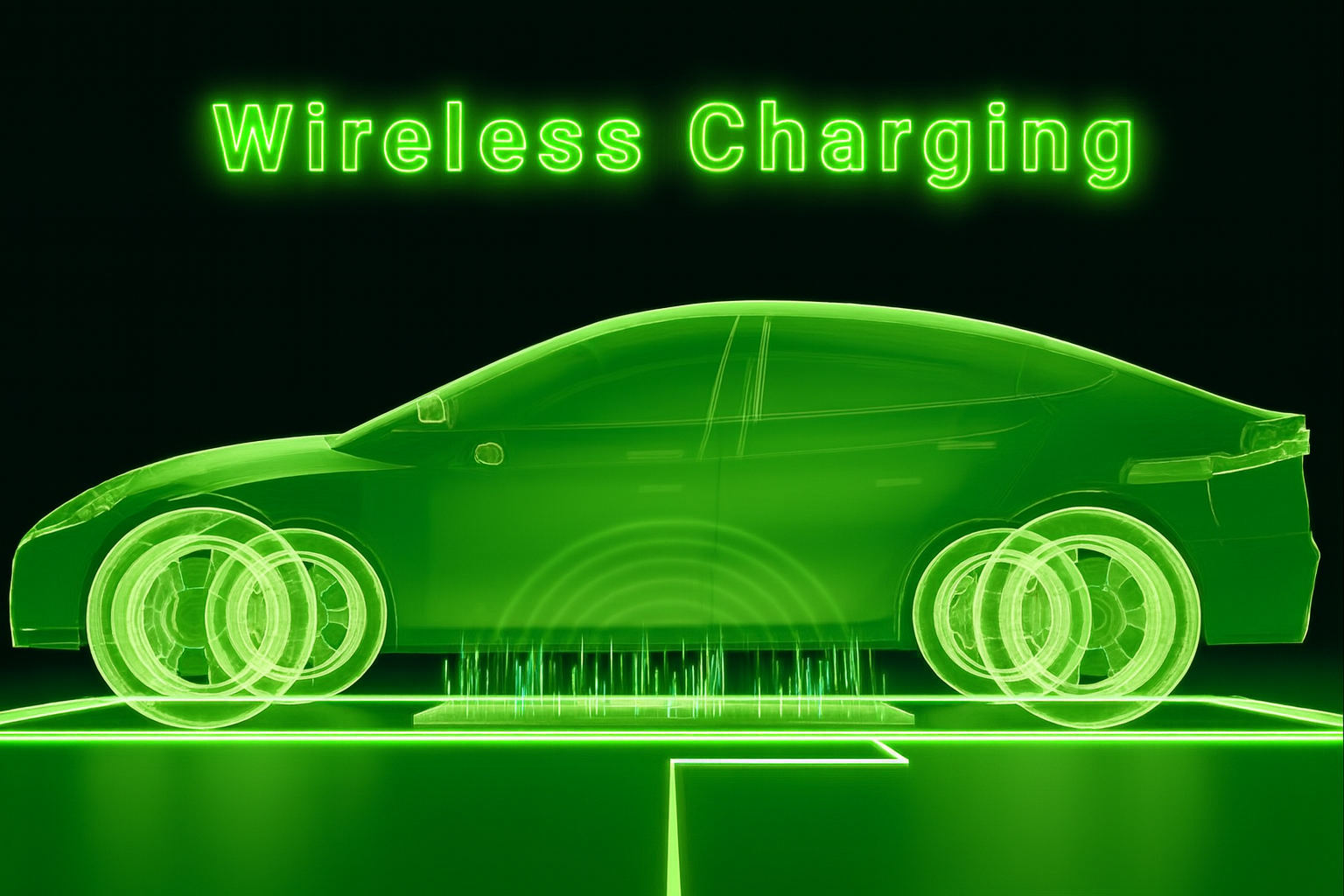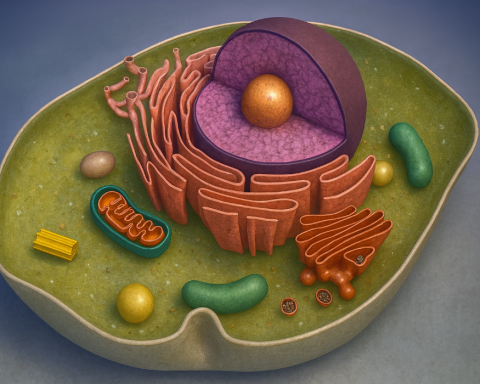- Who & where: A team led by Professor Hiroo Sekiya at Chiba University (with collaborators at Tokyo University of Science and Sojo University). tus.ac.jp
- What’s new: A fully numerical, machine‑learning–based design method for load‑independent (LI) wireless power transfer (WPT) systems—built around differential‑equation modeling plus a genetic algorithm. CHIBADAI NEXT
- Why it matters: The method keeps output voltage nearly constant across changing loads (under 5% variation) without feedback control and maintains ZVS, tackling a long‑standing stability headache in WPT. chiba-u.ac.jp
- Measured performance: 86.7% efficiency at 6.78 MHz with >23 W delivered in a class‑EF system. chiba-u.ac.jp
- Peer‑review: Published June 18, 2025 in IEEE Transactions on Circuits and Systems I: Regular Papers (DOI: 10.1109/TCSI.2025.3579127). tus.ac.jp
- Funding: Japan’s MEXT—Program for Creation of Innovative Core Technology for Power Electronics (Grant JPJ009777). chiba-u.ac.jp
The news, at a glance
Wireless power transfer is everywhere—from phone pads and toothbrush chargers to industrial sensors—but most systems’ voltage sags or spikes when the load changes, especially during battery charging. Sekiya’s group says their machine‑learning design procedure solves that by numerically optimizing a WPT circuit so it stays “load‑independent,” i.e., it delivers a steady output and preserves zero‑voltage switching (ZVS) across a wide range of conditions. CHIBADAI NEXT
In lab tests on a class‑EF resonant link, the team reports <5% output‑voltage variation over load changes and 86.7% end‑to‑end efficiency at 6.78 MHz, delivering more than 23 W—numbers that are competitive for compact resonant systems operating in the 6.78 MHz ISM band used by many wireless‑charging designs. chiba-u.ac.jp
“We established a novel design procedure for a LI‑WPT system that achieves a constant output voltage without control against load variations,” said Prof. Hiroo Sekiya. chiba-u.ac.jp
He also called the work “the first success of a fully numerical design based on machine learning in [power electronics] research,” underscoring how AI‑assisted optimization is starting to augment (and sometimes replace) traditional closed‑form circuit design. sojo-u.ac.jp
How the method works (and why it’s different)
Model the real circuit, not an ideal one. Instead of relying on idealized equations that often break when parasitics show up, the team describes the WPT link with time‑domain differential equations that include non‑ideal device behavior (e.g., diode capacitances). The model is stepped numerically to steady state, then scored on three objectives: (1) output‑voltage regulation across loads, (2) power‑delivery efficiency, and (3) total harmonic distortion. A genetic algorithm iteratively tunes component values until the score converges. CHIBADAI NEXT
Why it matters: Classical LI designs depend on exquisitely chosen component values derived from analysis under restrictive assumptions; small real‑world deviations—and load changes—can upset them. The fully numerical approach embraces hardware imperfections and searches for workable operating points that analytical methods may miss. Media briefs from multiple outlets (TechXplore, IT Brief Asia, Open Access Government) highlighted this shift from pencil‑and‑paper formulae to AI‑assisted circuit synthesis. Tech Xplore
What independent coverage says
- TechXplore summarized the advance and reiterated the efficiency and stability figures, emphasizing the genetic‑algorithm loop and the move toward automated circuit design. Tech Xplore
- Live Science framed the work as a “step toward a fully wireless society,” noting the drop in voltage fluctuation from ~18% to ~5% and potential relevance for EV‑scale batteries where load shifts are large. Live Science
- IT Brief Asia and Open Access Government echoed the technical approach and results, including the 6.78 MHz / 23 W / 86.7% demonstration and the outlook for smaller, cheaper designs. IT Brief Asia
“We are confident this is a significant step toward a fully wireless society,” Sekiya added, pointing to cost and size reductions when LI operation is designed in from the start. Tech Xplore
How it compares to the state of the art
Researchers have long chased load‑independent WPT to keep outputs steady and preserve soft‑switching, with notable progress in multi‑load and long‑distance links. But most prior work leaned on analytical tuning or control loops. The Chiba method is notable because it finds LI designs numerically—directly in the space where real parasitics live—rather than assuming them away. chrismi.sdsu.edu
There’s growing interest in AI across WPT more broadly (especially in RF/far‑field links and waveform design), which aligns with this “learn‑from‑physics” trend in power electronics. The team’s claim is not that AI in WPT is new, but that this is the first fully numerical, ML‑based design procedure demonstrated in a power‑electronics WPT circuit that hits LI performance targets without added control. arXiv
Where it could matter first
- Consumer & industrial charging: Phones, wearables, robots, and tools that experience large load swings during charge/discharge cycles benefit from flat voltage without extra feedback hardware. Live Science notes the relevance for EV batteries, where load and impedance change dramatically during charge. Live Science
- Tighter/light‑load operation: The group reports better light‑load behavior via explicit modeling of diode parasitic capacitance, a weakness in many analytical designs. chiba-u.ac.jp
Caveats & what to watch next
- Power scaling & alignment: The proof‑of‑concept is >23 W at 6.78 MHz in a class‑EF setup. Rolling this out to higher‑power chargers and across coil‑misalignment scenarios will be key next steps (the group has analyzed robustness to misalignment in prior LI work). chiba-u.ac.jp
- Generalization: The procedure should extend to other topologies, but computational cost and fitness‑function design may need tailoring for different coils, rectifiers, and materials. (Media coverage notes the broader push toward automated circuit design in power electronics.) Tech Xplore
The paper & the team
- Title: ML‑Based Fully‑Numerical Design Method for Load‑Independent Class‑EF WPT Systems
- Authors: Naoki Fukuda; Yutaro Komiyama; Wenqi Zhu (Tokyo University of Science); Yinchen Xie; Ayano Komanaka; Akihiro Konishi (Sojo University); Kien Nguyen; Hiroo Sekiya (Chiba University)
- Journal: IEEE Transactions on Circuits and Systems I: Regular Papers (Published online June 18, 2025) — DOI: 10.1109/TCSI.2025.3579127. tus.ac.jp
Expert quotes you can cite
- Hiroo Sekiya (Chiba University): “We established a novel design procedure for a LI‑WPT system that achieves a constant output voltage without control against load variations.” chiba-u.ac.jp
- Hiroo Sekiya (on impact): “We are confident that the results of this research are a significant step toward a fully wireless society.” Tech Xplore
- Team’s novelty claim: the work is “the first success of a fully numerical design based on machine learning in the field of power electronics.” sojo-u.ac.jp
Why this is a big deal (editor’s take)
Two things stand out. First, reliability without feedback—designing for LI at the component level means fewer sensors and controllers in the loop. Second, the design workflow itself: power electronics is inching from “solve an ideal model, then hand‑tune” toward closed‑loop, ML‑assisted synthesis that starts with real component physics. If you’re building WPT into products, that’s a pathway to smaller BOMs, more tolerance to part variances, and faster iteration—provided the numerical search scales with your power levels and constraints. CHIBADAI NEXT
Wireless Power Transfer (WPT) — a practical FAQ for product engineers (2025)
Below is a concise, engineering‑first FAQ you can hand to teammates, program managers, and compliance to make decisions about WPT architectures, standards, safety, and go‑to‑market risk.
1) What are the main WPT “families,” and when is each appropriate?
Inductive (tight coupling; ~110–205 kHz for most consumer gear). This is the Qi ecosystem used in phones, wearables, and accessories. Qi2 adds magnets for consistent alignment and certified 15 W (and a new 25 W tier). It’s the default if you need broad, phone‑class interoperability. Tektronix
Magnetic resonance (looser coupling; 6.78 MHz ISM). AirFuel Resonant targets alignment freedom and multi‑device charging on a surface, trading some implementation complexity for a better UX in desks, kiosks, and shared spaces. airfuel.org
Far‑field RF (e.g., 915 MHz). AirFuel RF (and vendor‑specific systems) serve ultra‑low‑power wearables/IoT at short‑to‑moderate distances; think μW–mW budgets where trickle power beats battery swaps. Regulatory and exposure constraints dominate here. airfuel.org
2) Which standards should I plan around?
- Qi / Qi2 (WPC) for handhelds & accessories. Qi2’s Magnetic Power Profile (MPP) enforces magnet alignment and certified 15 W today, with a 25 W profile announced for 2025‑era devices. Wireless Power Consortium
- AirFuel Resonant (6.78 MHz) for alignment‑free, multi‑device surfaces; AirFuel RF for low‑power at‑a‑distance. airfuel.org
- EVs: SAE J2954 defines light‑duty EV wireless charging (interoperability, EMF, EMC, safety, and test), operating around 85 kHz. (Power classes commonly referenced are WPT‑1/2/3 ~3.7/7.7/11 kW; J2954/2 addresses heavy‑duty.) SAE International
ICYMI: ETSI EN 303 417 is the EU harmonized radio standard that sets technical characteristics & methods of measurement for non‑beam WPT in 19–21 kHz, 59–61 kHz, 79–90 kHz, 100–300 kHz, and 6.765–6.795 MHz. Keep this one handy for RED assessments. ETSI
3) What are the big UX differences among them?
- Placement sensitivity: Qi requires decent alignment; Qi2’s magnets “align devices and chargers perfectly,” reducing coil‑to‑coil variance and losses. (Quote from WPC.) Wireless Power Consortium
- Multiple devices: AirFuel Resonant explicitly supports simultaneous, placement‑agnostic charging on a surface “without requiring precise placement.” (AirFuel.) airfuel.org
4) What frequencies are actually used?
- Qi / Qi2: Typically ~110–205 kHz for low‑power transmitters; medium‑power operation extends up to ~300 kHz in some profiles. Tektronix
- AirFuel Resonant: 6.78 MHz ISM. airfuel.org
- EV (J2954): Around 85 kHz. (Managed under vehicle WPT test methods defined by SAE.) SAE International
- EU RED (EN 303 417): Validates WPT equipment in 19–21 kHz, 59–61 kHz, 79–90 kHz, 100–300 kHz, and 6.765–6.795 MHz. ETSI
5) How do I think about efficiency and alignment?
- Efficiency depends on coupling (k), coil Q, compensation network, and control.
- For consumer Qi/Qi2, you regulate power by modulating frequency (and sometimes duty) in the ~110–205 kHz band; misalignment increases reactive power and heat. Tektronix
- Resonant systems (6.78 MHz) are chosen to relax alignment and enable multi‑device operation—useful when UX trumps exact placement. airfuel.org
Tip: Measure end‑to‑end (Tx supply DC → Rx regulated DC) and log coil temperature rise and drift with metal nearby; don’t rely on bench‑only coil‑to‑coil numbers.
6) What’s the state of Foreign Object Detection (FOD) and thermal controls?
FOD is mandatory in Qi, and its sensitivity has been tightened over time; certification includes thermally instrumented foreign‑object tests. Wireless Power Consortium
Modern Qi2 compliance adds improvements that can be leveraged for in‑power FOD (estimating friendly metal losses). graniteriverlabs.com
7) What does interoperability/certification really mean in Qi?
Only complete transmitters/receivers are certifiable. You cannot certify a coil or IC by itself as “Qi Certified.” Use the WPC database to verify full products. Wireless Power Consortium
8) What are the regulatory pillars I must satisfy?
- U.S. (FCC): Most WPT falls under Part 18 (ISM) for emissions; if you add radio comms, Part 15 also applies. FCC KDB 680106 gives the equipment‑authorization playbook. “Both Part 15 and Part 18 devices are required to comply with the FCC limits for human radiofrequency exposure.” (OET KDB.) eCFR
- EU (RED/EMC): ETSI EN 303 417 governs radio requirements for non‑beam WPT in specified LF/MF and 6.78 MHz bands; some plain chargers without comms may be scoped under CISPR 11 for EMC instead. ETSI
- Global references: CISPR 11 (emissions for ISM equipment) and ITU‑R SM.2303‑4 (regulatory studies/limits references) are frequently cited. Bring these to your test lab early. IEC Webstore
9) What about human exposure (safety)?
Apply ICNIRP 2020 guidelines for 100 kHz–300 GHz RF exposure in EU‑style assessments; the update supersedes earlier parts and is the basis many labs use. ICNIRP
10) How do Qi vs Qi2 vs AirFuel compare at a glance?
- Qi (legacy/EPP): Ubiquitous pads; 5–15 W with careful alignment; mature FOD; frequency‑agile around 110–205 kHz. DigiKey
- Qi2 (MPP): Magnet‑assisted alignment for predictable coupling; certified 15 W today and a 25 W tier emerging; better accessory interoperability. Wireless Power Consortium
- AirFuel Resonant: 6.78 MHz, multi‑device, placement‑agnostic charging; well‑suited to worktops, vehicles, and kiosks. airfuel.org
11) What do I need to know about EV wireless charging?
SAE J2954 defines alignment methods, EMC/EMF, safety, and interoperability for light‑duty EVs at ~85 kHz. It’s the anchor for pilot deployments and future homologation. Public summaries reference classes like WPT‑1/2/3 (~3.7/7.7/11 kW) and heavy‑duty evolution in J2954/2. Plan early with your automaker/Tier‑1 partners and accredited labs. SAE International
12) What are the go‑to design levers (topology & compensation)?
- Inductive Qi/Qi2: Half‑bridge LLC or LCC with frequency (and sometimes duty) modulation; tight ferrite‑backed coils; magnets (Qi2) for repeatable k. Tektronix
- Resonant (6.78 MHz): Class‑E/EF amplifiers + resonant matching; designed for ZVS and tolerance to lateral/height offsets at the UX you want. (See also next Q on ML‑assisted design.)
13) Anything new I should know about WPT design automation?
Yes—there’s credible movement toward machine‑learning–assisted, fully numerical design that bakes in parasitics and targets load‑independence (flat output, preserved ZVS) without feedback control.
A 2025 team led by Prof. Hiroo Sekiya (Chiba University) demonstrated <5% output‑voltage variation and ~86.7% efficiency at 6.78 MHz on a Class‑EF link using a genetic algorithm over a time‑domain circuit model. chiba-u.ac.jp
“We established a novel design procedure for a LI‑WPT system that achieves a constant output voltage without control against load variations,” notes Sekiya. tus.ac.jp
If your product is sensitive to load swings (battery charge phases, dynamic loads), this approach can reduce BOM (fewer sensors/controllers) and improve tolerance to part variation.
14) What are the top certification blockers teams hit?
- Assuming component certification = product certification. WPC only certifies complete Tx/Rx products; coils/ICs cannot be “Qi Certified.” Wireless Power Consortium
- Skipping FOD tuning/validation. Qi requires FOD; verify with WPC foreign‑object fixtures and thermal criteria. Wireless Power Consortium
- Late regulatory engagement. For the U.S., read FCC KDB 680106 early; many Part 18 WPT devices need specific OET guidance or must meet the v04 conditions. FCC Apps
- Wrong EU scope. Some WPT falls under EN 303 417 (radio/RED), others under CISPR 11 (EMC). Decide scope with your lab up front. ETSI
15) How should I spec and test a design before sending it to a lab?
- Define: min/max coil gap, lateral/rotational offsets, allowable metal (phone rings, cases), and ambient range.
- Instrument: end‑to‑end efficiency (DC‑in → regulated DC‑out), coil & surface temps, and misalignment sweeps; log FOD triggers. (Most Qi systems frequency‑modulate in 110–205 kHz, so capture EMI around that band.) Tektronix
- Pre‑scan against CISPR 11 radiated/conducted limits and verify ICNIRP exposure margins at customer use distances. IEC Webstore
16) What are good rules of thumb for picking an architecture?
- Phone/wearable, mainstream accessories: Qi2 for predictable UX (magnets), certification path, and 15–25 W road map. Wireless Power Consortium
- Furniture/retail/transport cabins: AirFuel Resonant for spatial freedom and multi‑device use. airfuel.org
- Low‑power IoT at distance: AirFuel RF if trickle power is acceptable and battery swaps are a pain. airfuel.org
- Vehicles: SAE J2954 stack; coordinate with OEM homologation and infrastructure teams. SAE International
17) Need quick talking points for leadership?
- Qi2 brings magnet‑assisted alignment and 15 W/25 W profiles to the standard ecosystem. WPC describes Qi2 devices as featuring magnetic attachment that “aligns devices and chargers perfectly.” Wireless Power Consortium
- AirFuel Resonant focuses on “power[ing] multiple devices simultaneously… without requiring precise placement.” airfuel.org
- Compliance is not optional: KDB 680106 (U.S.), EN 303 417/CISPR 11 (EU), and ICNIRP 2020 exposure limits govern your design envelope. ICNIRP, Apps
- ML‑assisted design is now a credible path to load‑independent links at 6.78 MHz (Chiba Univ., 86.7% efficiency demo). chiba-u.ac.jp
Appendix: Source starter pack
- WPC (Qi/Qi2): overview & updates; spec history; certification rules. Wireless Power Consortium
- AirFuel Alliance: Resonant & RF technology pages; frequency rationale. airfuel.org
- EV: SAE J2954 standard page and public briefings. SAE International
- Regulatory/EMC: FCC KDB 680106; CISPR 11; EN 303 417; ICNIRP 2020; ITU‑R SM.2303‑4. ITU+4FCC Apps
- Design notes & measurement: Tektronix app note on Qi measurement/controls. Tektronix
- Research trend: Chiba University + collaborators on machine‑learning, fully numerical LI‑WPT (press release & coverage). chiba-u.ac.jp
Further reading & source notes
- Chiba University press material with methodology, metrics, and quotes (includes funding details and DOI). chiba-u.ac.jp
- TechXplore coverage highlighting the numerical/ML loop and automation angle. Tech Xplore
- Live Science explainer tying the stability gains to everyday and EV charging scenarios. Live Science
- Tokyo University of Science media page listing the full author roster and publication details. tus.ac.jp
- Open Access Government and IT Brief Asia recaps with the same core performance numbers and quotes. Open Access Government
- Background context on LI WPT and prior approaches (multi‑load systems; GA‑assisted optimization in other WPT contexts). chrismi.sdsu.edu












